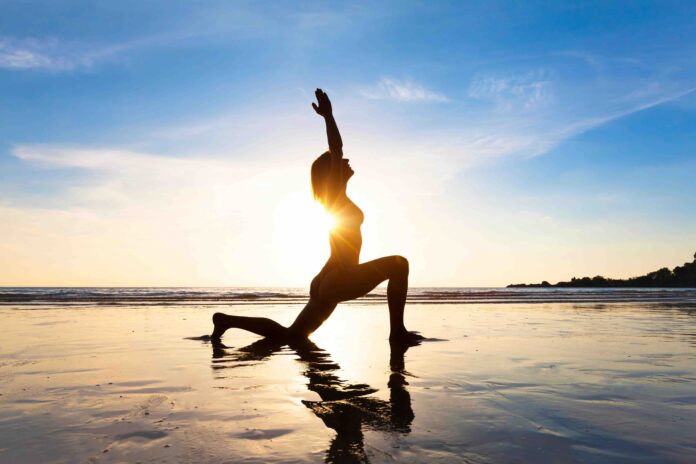Step by Step Guideline to Different Types of Yoga
Introduction
Yoga, a word originating from the ancient Sanskrit language, implies unity and harmony. This comprehensive guide offers deep insights into the world of Yoga, shedding light on its multifaceted nature, and unraveling the profound benefits it bestows upon practitioners.
The History of Yoga: Tracing Back the Roots
Understanding Yoga involves delving into its historical essence. Yoga’s origins trace back to more than 5000 years ago in the Indian subcontinent. Primarily a spiritual discipline, Yoga later incorporated elements of physical postures, meditation, and breath control, leading to the diversified practice we recognize today.
The Different Styles of Yoga
Yoga isn’t a one-size-fits-all discipline. It branches into multiple styles, each providing distinct benefits:
Hatha Yoga
Hatha Yoga serves as the foundation for many Yoga styles. This style primarily focuses on postures (asanas) and breath control (pranayama), making it ideal for beginners.
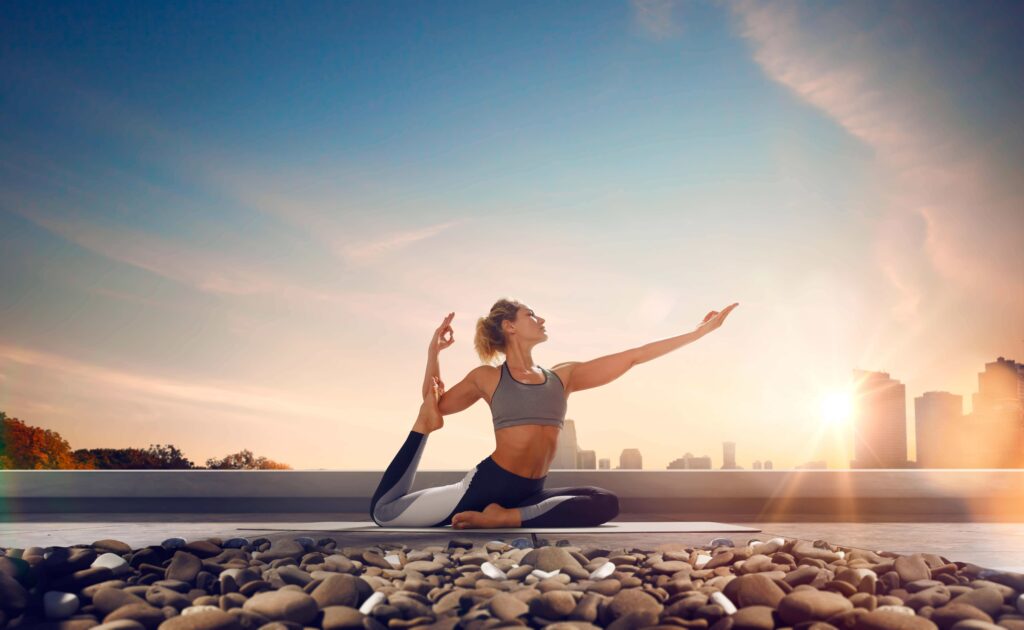
What is Hatha Yoga?
Hatha Yoga is often considered the foundation of many other Yoga styles. Originating from the Sanskrit words ‘ha’, meaning ‘sun’, and ‘tha’, meaning ‘moon’, Hatha Yoga is about finding balance. It is a holistic practice that integrates physical postures (asanas), breath control (pranayama), and meditation to cultivate physical health and mental well-being.
Why Choose Hatha Yoga?
Hatha Yoga is an excellent entry point for beginners because it introduces the fundamental asanas and breathing techniques used in many other forms of Yoga. It also cultivates mindfulness, promotes relaxation, and fosters physical strength and flexibility.
How to Start Hatha Yoga: A Beginner’s Guide
Getting started with Hatha Yoga can seem daunting, but remember that every journey begins with a single step. Here are some steps to help you begin your Hatha Yoga practice:
Find a Comfortable Space
Your environment can greatly influence your Yoga experience. Choose a quiet, comfortable space where you can focus and relax. Ensure the area is clean and free of potential distractions.
Invest in a Yoga Mat
A good Yoga mat provides stability and comfort. Choose one that is non-slip and offers enough padding to protect your joints.
Start with Basic Asanas
Hatha Yoga is a rich tapestry of various poses. As a beginner, start with the following basic asanas:
Mountain Pose (Tadasana)
This standing pose serves as the starting point for many asanas. Stand tall, aligning your body from head to toe, and focus on your breath.
Tree Pose (Vrikshasana)
This pose helps improve balance and strengthen the leg muscles. Stand on one leg, place the other foot on the standing leg’s inner thigh, raise your arms above your head, and maintain balance as you breathe.
Downward-Facing Dog (Adho Mukha Svanasana)
This pose stretches the entire body and builds strength. Begin on your hands and knees, then lift your knees off the floor, extending your body into an ‘A’ shape. Press your hands and feet firmly into the mat.
Incorporate Pranayama
In Hatha Yoga, breath control is as important as physical postures. Begin with simple techniques such as equal breathing (inhaling and exhaling for equal lengths of time) or abdominal breathing (focusing on expanding and contracting the belly with each breath).
Practice Consistently
Consistency is key in Yoga. Aim for at least 15-30 minutes of practice a day, gradually increasing your time as your comfort and proficiency grow.
Ashtanga Yoga
Ashtanga Yoga, a more vigorous style, comprises six series of specific postures that sync with breath. This style promotes strength, flexibility, and stamina.
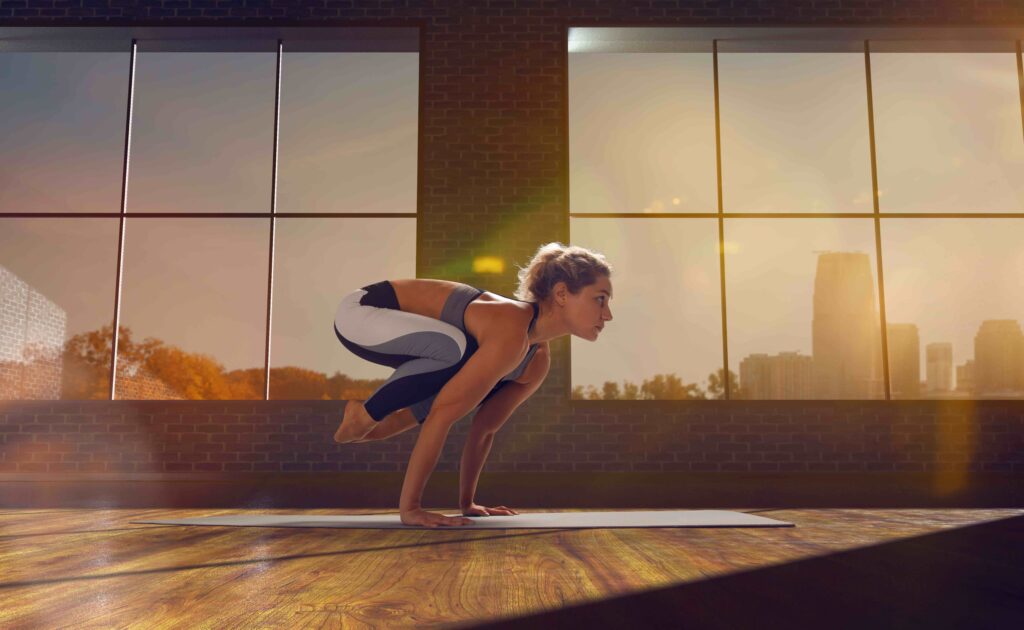
Understanding Ashtanga Yoga
Ashtanga Yoga is a rigorous and structured form of Yoga that promotes physical strength, flexibility, and internal purification. In Sanskrit, ‘ashtanga’ translates to ‘eight limbs,’ reflecting the eight-fold path of Yoga outlined in Patanjali’s Yoga Sutras. These eight limbs include ethical principles, physical postures, breath control, sensory withdrawal, concentration, meditation, and a state of blissful consciousness.
Why Choose Ashtanga Yoga?
Ashtanga Yoga is a dynamic, physically challenging practice that syncs breath with movement. It appeals to those seeking a vigorous workout, as well as those looking for a meditative practice since the continual movement from one pose to the next encourages a focused, inward state.
Starting Ashtanga Yoga: A Beginner’s Guide
Ashtanga Yoga might seem daunting for beginners due to its complexity and pace, but don’t let this deter you. Here’s a guide to help you commence your Ashtanga Yoga journey:
Choose a Suitable Environment
Find a peaceful and clean space where you can practice without interruption. A good Yoga mat is crucial for grip and comfort during challenging postures.
Learn the Basic Sequence
Ashtanga Yoga is characterized by a specific sequence of poses (asanas), which are performed in the same order in each practice. Beginners usually start with the Primary Series, which includes the following foundational asanas:
Sun Salutation A and B (Surya Namaskara A and B)
These sequences serve as a warm-up, connecting breath with movement and preparing the body for subsequent asanas.
Standing Poses
This includes asanas like Warrior Pose (Virabhadrasana) and Extended Triangle Pose (Utthita Trikonasana), which build strength and stability.
Seated Poses and Finishing Sequence
The seated poses focus on flexibility and calming the mind. The Finishing Sequence, including inversions like Shoulder Stand (Sarvangasana), relaxes and rejuvenates the body.
Practice Breath Control (Pranayama)
In Ashtanga Yoga, the Ujjayi Pranayama, or Victorious Breath, is practiced. This involves inhaling and exhaling through the nose while maintaining a slight constriction in the back of the throat, resulting in a soothing, rhythmic sound.
Incorporate Bandhas and Drishti
In addition to asanas and pranayama, Ashtanga Yoga incorporates internal energy locks (bandhas) and gaze points (drishti). These foster concentration, internal awareness, and control of energy flow.
Begin with Guidance
Considering its complexity, it’s beneficial for beginners to start under the guidance of an experienced Ashtanga Yoga teacher. They can ensure correct alignment, provide modifications, and guide you through the correct sequence of postures.
Consistent Practice is Key
Consistency is crucial in Ashtanga Yoga. Regular practice not only enhances strength and flexibility but also facilitates mastery of the sequence, allowing for a more meditative, flowing practice.
Vinyasa Yoga
Like a dance, Vinyasa Yoga involves smoothly transitioning from one pose to the next. This rhythmically dynamic style offers a great cardiovascular workout.
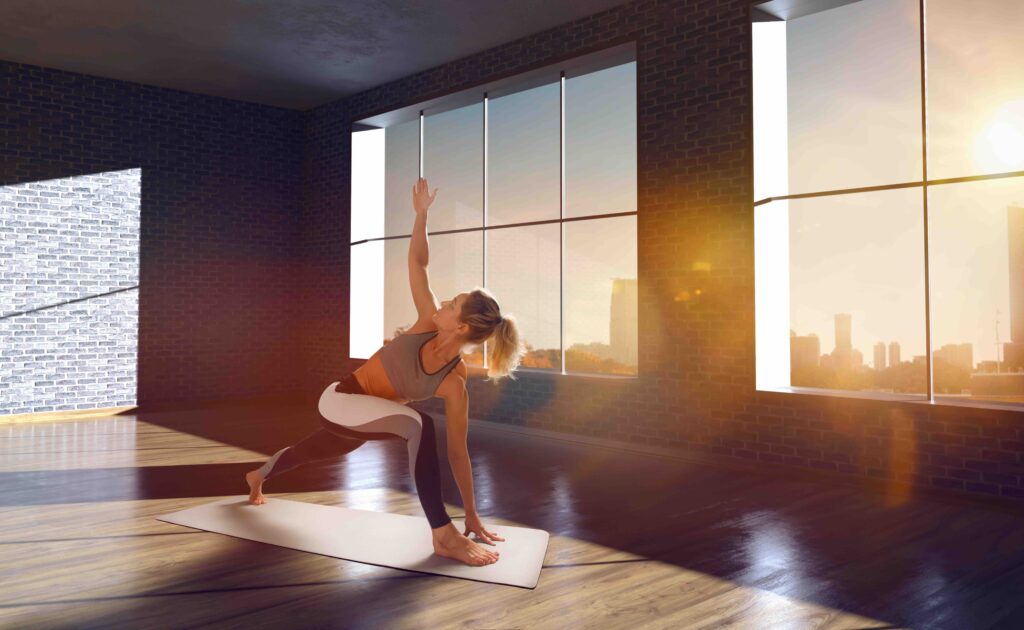
What is Vinyasa Yoga?
Vinyasa Yoga is a dynamic style of Yoga characterized by fluid transitions from one pose to the next, synchronized with the breath. The term ‘Vinyasa’ stems from Sanskrit, where ‘vi’ means ‘in a special way,’ and ‘nyasa’ translates to ‘to place.’ Thus, Vinyasa Yoga is all about placing each movement and breath with intention and awareness.
Why Opt for Vinyasa Yoga?
If you’re looking for a practice that combines mindfulness with a good dose of cardiovascular exercise, Vinyasa Yoga might be your perfect match. It improves flexibility, strength, and balance while also fostering mental clarity and stress reduction.
Getting Started with Vinyasa Yoga: A Beginner’s Guide
Despite the rapid pace of Vinyasa Yoga, beginners need not be discouraged. Here’s a guide to help you commence your Vinyasa journey:
Find the Right Space and Equipment
Look for a serene and clutter-free space where you can move freely and without distractions. A non-slip yoga mat is essential to ensure stability and comfort during the flow.
Familiarize Yourself with Basic Asanas
Vinyasa Yoga involves a variety of poses. As a beginner, start with these fundamental asanas:
Mountain Pose (Tadasana)
This simple standing pose lays the foundation for other standing asanas and helps improve posture.
Downward-Facing Dog (Adho Mukha Svanasana)
A core asana in Vinyasa Yoga, this pose stretches the back, opens the chest, and strengthens the arms and legs.
Plank Pose (Kumbhakasana)
Plank pose builds core strength, an essential aspect of Vinyasa Yoga.
Cobra Pose (Bhujangasana)
This backbend opens the chest and shoulders, strengthening the spine and promoting flexibility.
Learn the Vinyasa Flow
A typical Vinyasa sequence, often executed during Sun Salutations, includes Plank Pose, Lowering Down (Chaturanga Dandasana), Cobra or Upward-Facing Dog (Urdhva Mukha Svanasana), and Downward-Facing Dog. It’s crucial to learn this flow, as it recurs throughout a Vinyasa class.
Synchronize Breath with Movement
In Vinyasa Yoga, every movement is paired with either an inhalation or an exhalation. This breath synchronization fosters a meditative state, enhances body awareness, and boosts oxygen flow.
Attend a Guided Class
As a beginner, it can be beneficial to attend a Vinyasa class led by a certified teacher. They can ensure correct alignment, offer modifications, and guide you through the flow at a manageable pace.
Bikram Yoga
Bikram Yoga, often performed in a heated room, consists of a series of 26 specific poses and two breathing exercises.
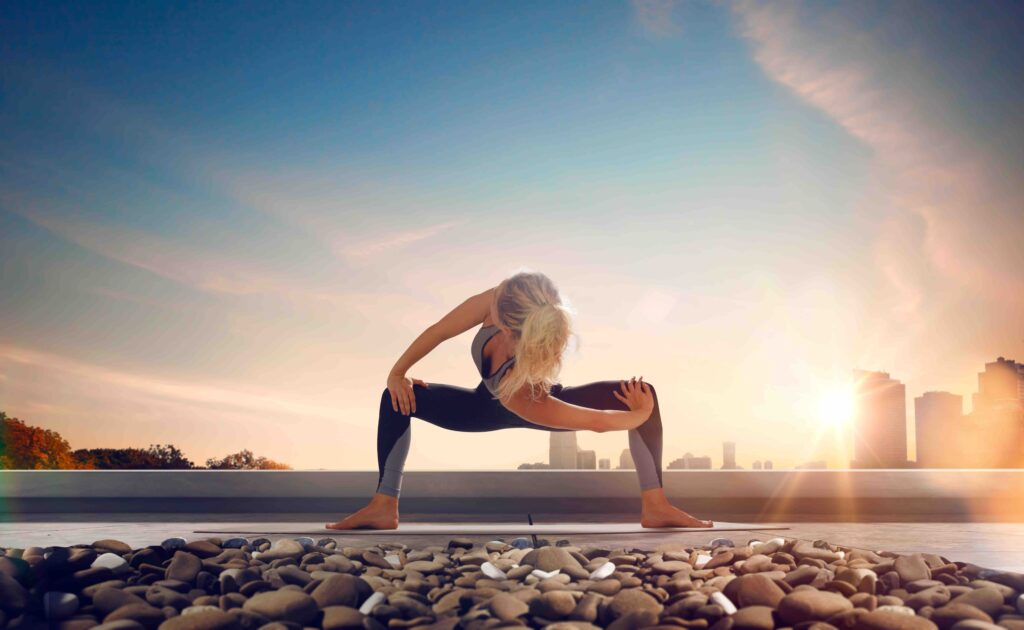
What is Bikram Yoga?
Bikram Yoga is a specific style of hot Yoga developed by Bikram Choudhury in the 1970s. It consists of a fixed sequence of 26 postures (asanas) and two breathing exercises, performed in a room heated to approximately 105 degrees Fahrenheit with around 40% humidity.
Why Choose Bikram Yoga?
Bikram Yoga offers a comprehensive workout that promotes flexibility, strength, and balance. The heat facilitates deeper stretching, promotes detoxification through sweating, and enhances cardiovascular health.
Starting Bikram Yoga: A Beginner’s Guide
Bikram Yoga might seem intense, but beginners can certainly adapt. Here’s a guide to help you get started:
Prepare for the Heat
The high temperature and humidity of a Bikram Yoga class can be challenging. Ensure you are well-hydrated before class and bring a water bottle to sip on throughout. Wearing breathable, moisture-wicking clothing can also enhance comfort.
Learn the Sequence
Bikram Yoga involves a specific series of 26 asanas and two pranayama exercises. As a beginner, familiarize yourself with some of these foundational postures:
Half Moon Pose (Ardha Chandrasana)
This pose, which begins the sequence, helps improve posture, flexibility, and balance.
Awkward Pose (Utkatasana)
This asana strengthens the legs and works on balance.
Camel Pose (Ustrasana)
This backbend promotes flexibility in the spine and opens up the chest and shoulders.
Rabbit Pose (Sasangasana)
This pose enhances the flexibility of the spine and aids in calming the mind.
Breathe Correctly
In Bikram Yoga, you’re instructed to breathe normally through the nose during the asanas, helping to maintain focus and calmness. The sequence also includes two specific pranayama exercises: Standing Deep Breathing (Pranayama Series) and Blowing in Firm Pose (Kapalbhati in Vajrasana).
Listen to Your Body
Never force a pose. It’s okay to take breaks or modify poses based on your comfort and ability. Over time, as your body acclimates to the heat and gains flexibility and strength, you’ll find yourself able to deepen your practice.
Seek Guidance from a Certified Teacher
Considering the heat and intensity of the practice, it’s advisable to begin Bikram Yoga under the guidance of a certified instructor. They can ensure proper alignment, provide modifications, and help monitor your wellbeing throughout the class.
Kundalini Yoga
Kundalini Yoga, also known as the “yoga of awareness,” combines movement, meditation, mantras, and breathing exercises.
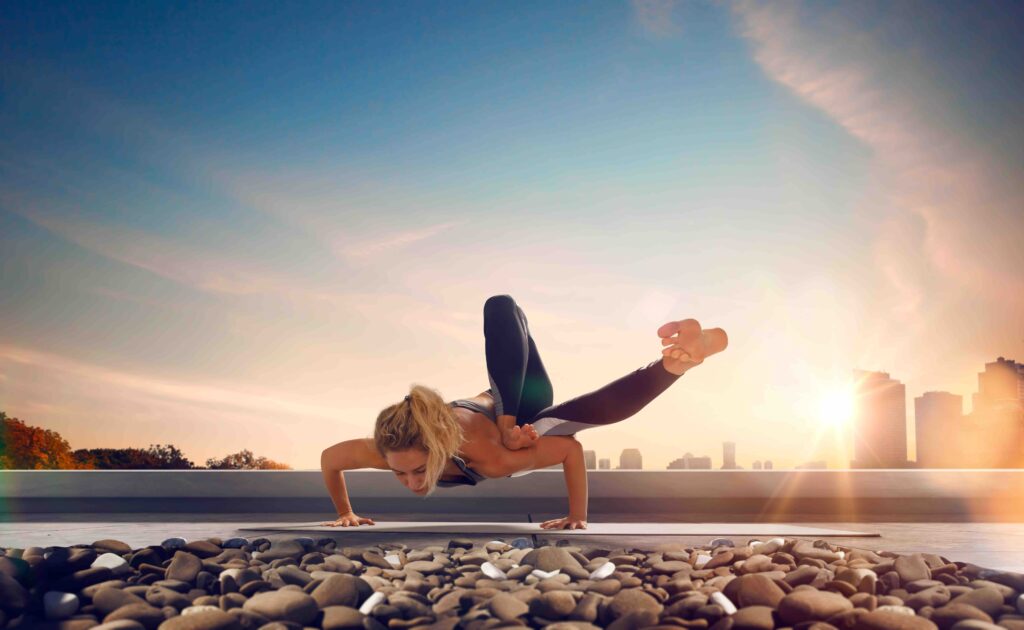
Understanding Kundalini Yoga
Kundalini Yoga, often referred to as the “Yoga of Awareness,” is a practice aimed at awakening the dormant spiritual energy within us, metaphorically depicted as a coiled serpent at the base of the spine. This ancient form of Yoga combines physical postures (asanas), breathing techniques (pranayama), meditation, chanting, and mudras (hand gestures) to cultivate physical vitality, consciousness, and spiritual growth.
Why Embrace Kundalini Yoga?
Kundalini Yoga is a holistic practice that works on several layers of our being. It is not only a powerful tool to enhance physical strength and flexibility but also a pathway towards self-discovery, spiritual awakening, and the development of intuition and inner peace.
Starting Kundalini Yoga: A Beginner’s Guide
Kundalini Yoga is an accessible practice, regardless of your fitness level or Yoga experience. Here’s how to get started:
Find an Appropriate Space
Choose a quiet, comfortable space where you can practice undisturbed. Comfortable clothing and a good Yoga mat will also add to the experience.
Understand the Basic Elements
Kundalini Yoga class typically starts with tuning in with a mantra, followed by warm-up exercises, a kriya (a set of asanas and pranayama), relaxation, meditation, and finally, the closing mantra.
Familiarize Yourself with Simple Kriyas
As a beginner, you can start with some simple kriyas. One such kriya is the “Basic Spinal Energy Series,” which enhances spinal flexibility and stimulates the chakras (energy centers).
Incorporate Mantra and Meditation
Chanting mantras and meditating are integral parts of Kundalini Yoga. The most common mantra used is “Sat Nam,” meaning “Truth is my identity.”
Be Consistent and Patient
Kundalini Yoga is a journey, not a destination. Consistent practice is key. Be patient with yourself and your progress.
Join a Kundalini Yoga Class
Especially for beginners, it’s beneficial to join a class led by a certified Kundalini Yoga teacher. They can guide you through the kriyas, ensure you’re practicing safely, and help you understand the deeper aspects of the practice.
The Physical Benefits of Yoga
Yoga’s holistic approach caters to both body and mind. Here are some physical benefits that Yoga imparts:
Enhances Flexibility and Strength
Yoga’s physical postures work on every part of the body, increasing flexibility and building strength.
Boosts Heart Health
Yoga’s calming practices, like meditation and controlled breathing, contribute to better heart health by reducing stress and lowering blood pressure.
Improves Balance and Stability
Yoga helps improve body awareness, fostering balance and stability, key elements that decline with age.
The Mental Benefits of Yoga
Yoga isn’t merely about physical well-being. It’s a mental balm that fosters clarity and inner peace.
Reduces Stress and Anxiety
Yoga emphasizes mindfulness and the present moment, thereby alleviating stress and anxiety.
Enhances Concentration and Memory
Regular Yoga practice promotes a sharper mind, boosting memory and concentration levels.
Incorporating Yoga into Daily Life
While Yoga classes offer guidance, you can effortlessly incorporate Yoga into your everyday life. Start with simple postures, gradually challenging yourself. Practice meditation and mindfulness, even if it’s only for a few minutes a day.
Yoga for Everyone: Myths Debunked
Yoga is often misinterpreted as a practice exclusive to certain groups. However, Yoga is for everyone, regardless of age, fitness level, or flexibility.
The Future of Yoga
With its growing popularity, Yoga is continuously evolving, incorporating modern science into ancient wisdom. Digital Yoga, personalized Yoga, and the amalgamation of Yoga with other fitness styles signify the future of this ancient practice.
Conclusion
Yoga, a practice deeply rooted in history, offers a multitude of physical and mental benefits. Its diverse styles cater to everyone, shattering misconceptions and confirming that Yoga truly is for everyone. As we step into the future, Yoga promises to remain a beacon of wellness and mindfulness, embodying the essence of unity and harmony. Dive into this journey of self-discovery and embrace the transformative power of Yoga in your life.

